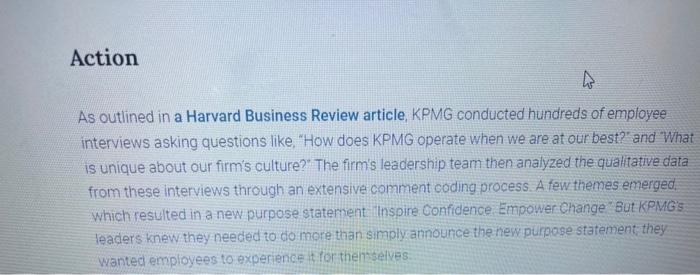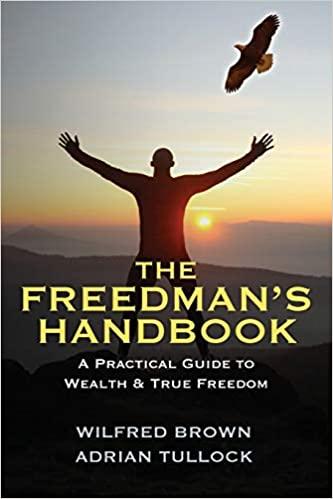hi please read this artical and answer the following queston thanks.
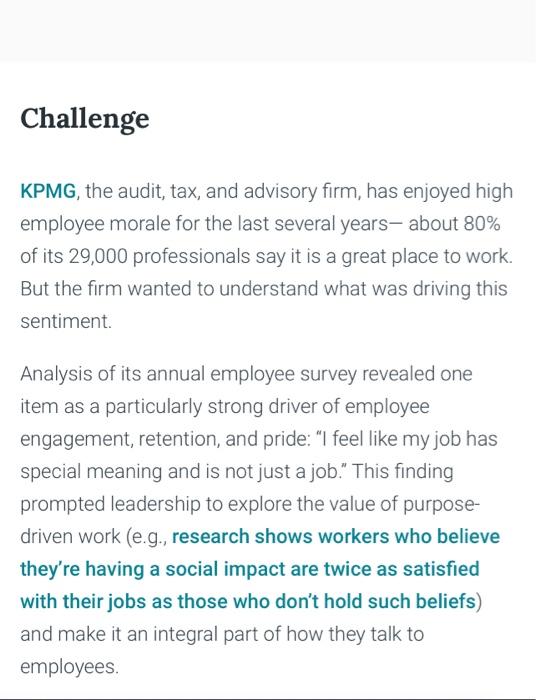
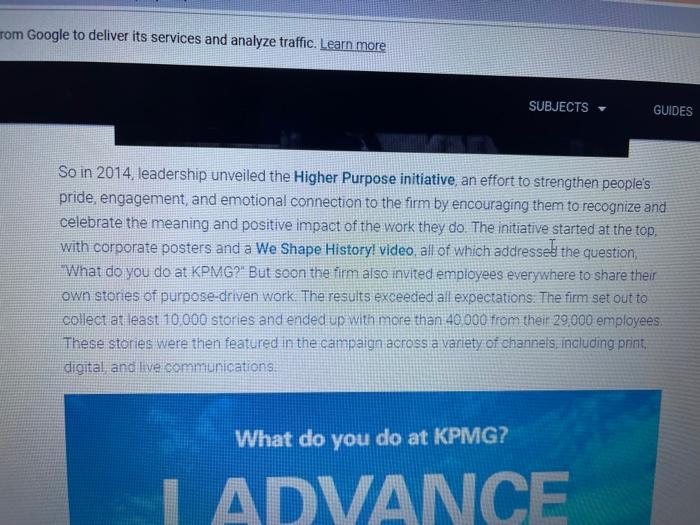
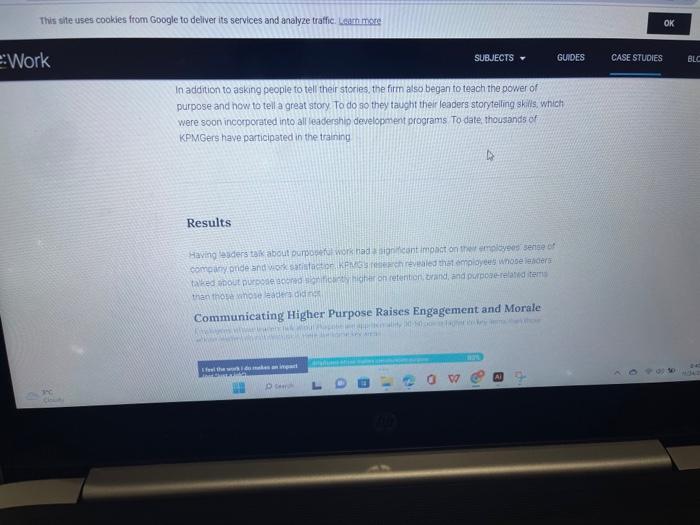
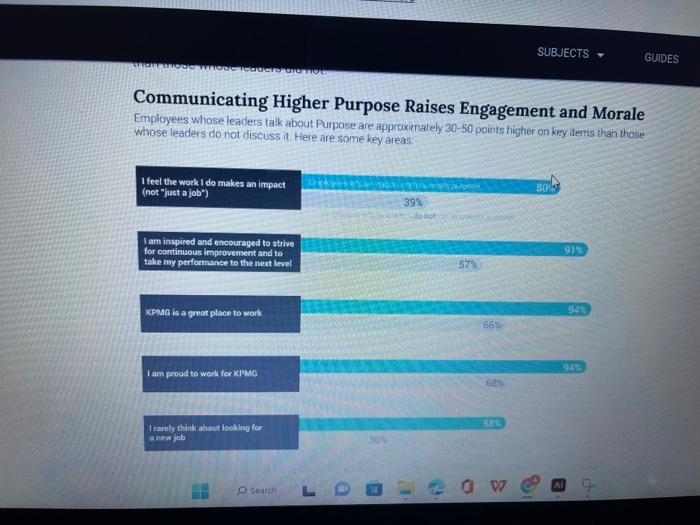
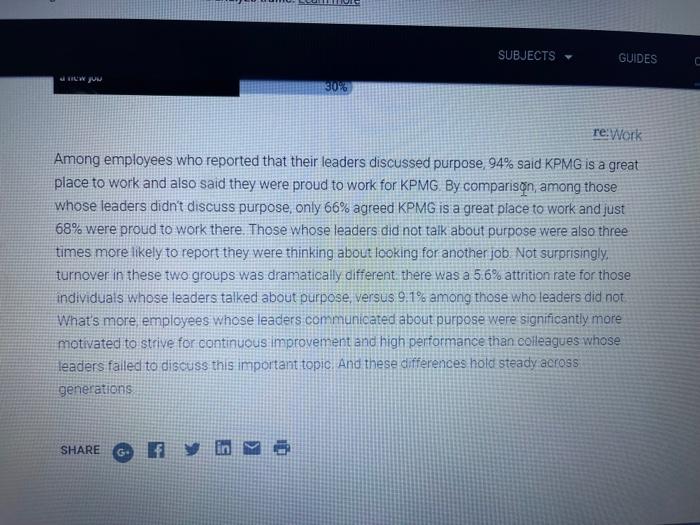
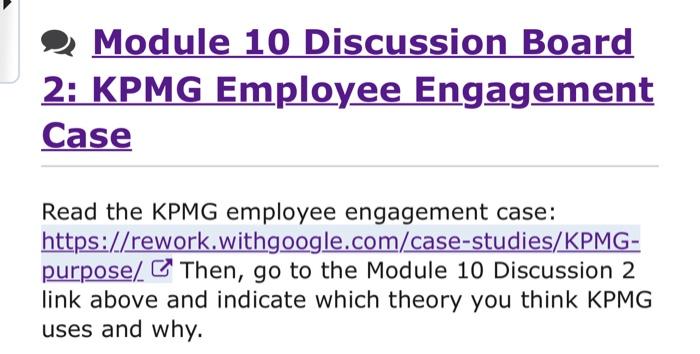
KPMG, the audit, tax, and advisory firm, has enjoyed high employee morale for the last several years - about 80% of its 29,000 professionals say it is a great place to work. But the firm wanted to understand what was driving this sentiment. Analysis of its annual employee survey revealed one item as a particularly strong driver of employee engagement, retention, and pride: "I feel like my job has special meaning and is not just a job." This finding prompted leadership to explore the value of purposedriven work (e.g., research shows workers who believe they're having a social impact are twice as satisfied with their jobs as those who don't hold such beliefs) and make it an integral part of how they talk to employees. They wanted to get people talking about purpose to create a central narrative to connect employees with the firm's history of purposeful work. To do so, they began collecting employee stories, highlighting the impactful work already being done, and teaching leaders how to talk about purpose with their people. Action As outlined in a Harvard Business Review article, KPMG conducted hundreds of employee interviews asking questions like, "How does KPMG operate when we are at our best?' and What is unique about our firm's culture?" The firm's leadership team then analyzed the qualitative data from these interviews through an extensive comment coding process. A few themes emerged. which resulted in a new purpose statement inspire Confidence. Empower Change. But KPMG's leaders knew they needed to do more than simply announce the new purpose statement they: wanted employees to experience it for then selves. So in 2014. leadership unveiled the Higher Purpose initiative, an effort to strengthen people's pride, engagement, and emotional connection to the firm by encouraging them to recognize and celebrate the meaning and positive impact of the work they do. The initiative started at the top, with corporate posters and a We Shape History! video. all of which addresseg the question, What do you do at KPMG?" But soon the firm also invited employees everywhere to share their own stories of purpose-driven work The results exceeded all expectations. The firm set out to collect as least 10,000 stories and ended up with more than 40,000 from their 29,000 employees. These stories were then featured in the campaign across a variety of channels, including, print; digital and lve communications: This site uses cookies from Google to deliver its services and analyze traffic. Lazm more In addition to asking people to tell their stories, the firm atso began to teach the power of purpose and now to tell a great story. To do so they taught their leaders storyteling shils, which were soon incorporated into all leadership development programs. To date thousands of KPMGers have participated in the training Results Communicating Higher Purpose Raises Engagement and Morale. Communicating Higher Purpose Raises Engagement and Morale Einployees whose leaders talk about Purpose are approximately 3050 points higher on key iterns than those whose leaders do not discuss it. Here are some key areas. Among employees who reported that their leaders discussed purpose, 94% said KPMG is a great place to work and also said they were proud to work for KPMG. By comparisn, among those whose leaders didn't discuss purpose, only 66% agreed KPMG is a great place to work and just 68% were proud to work there. Those whose leaders did not taik about purpose were also three times more likely to report they were thinking about looking for another job Not surprisingly, turnover in these two groups was dramatically different. there was a 5.6% attrition rate for those individuals whose leaders talked about purpose, versus 9.1% among those who leaders did not What's more employees whose leaders communieated about purpose were significantly more motivated to strive for continuous improvement and high performance than colleagues whose: leaders falled to discuss this important topic. And these differences hold steady across generations Read the KPMG employee engagement case: https://rework.withgoogle.com/case-studies/KPMGpurpose/ Then, go to the Module 10 Discussion 2 link above and indicate which theory you think KPMG uses and why



